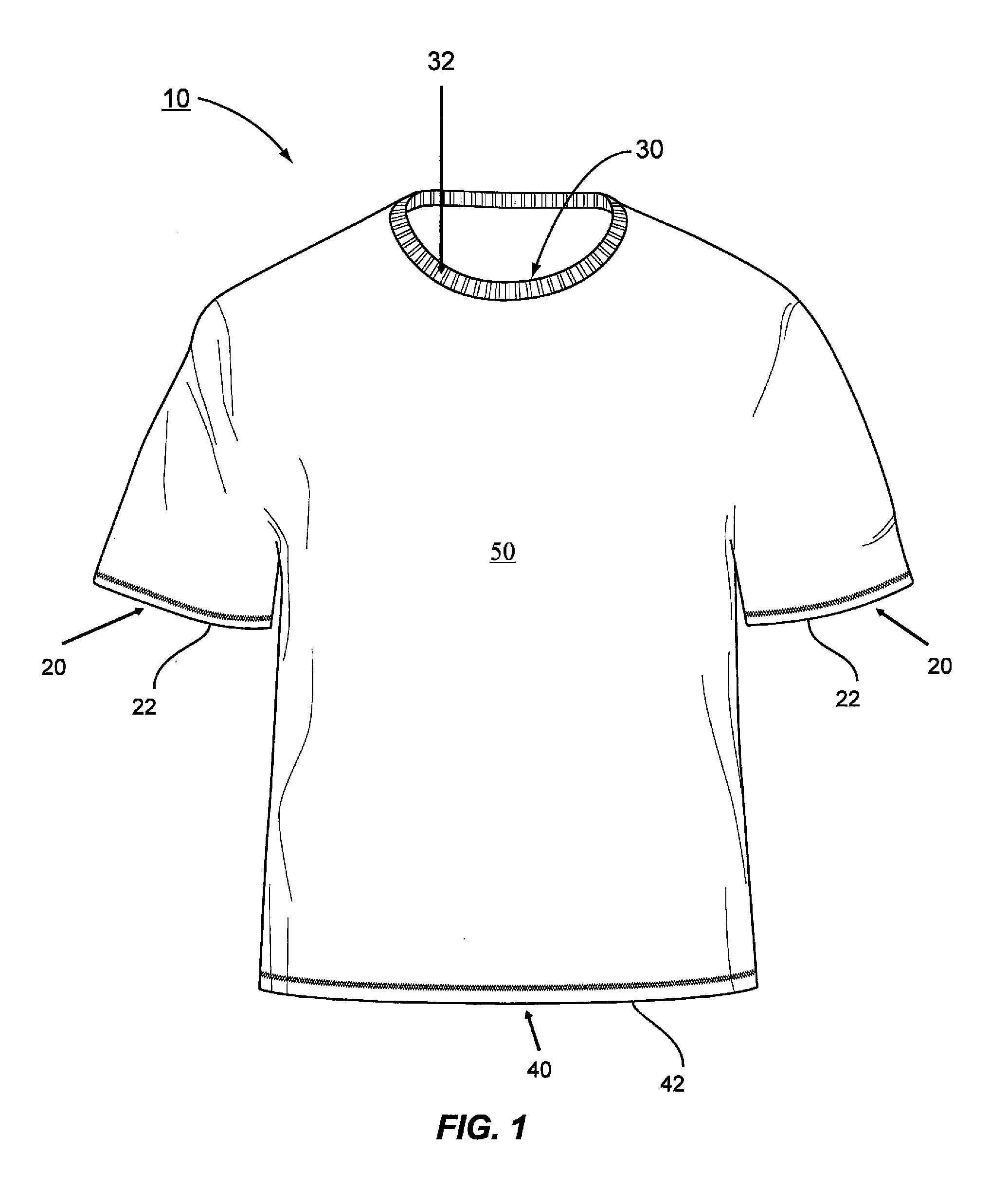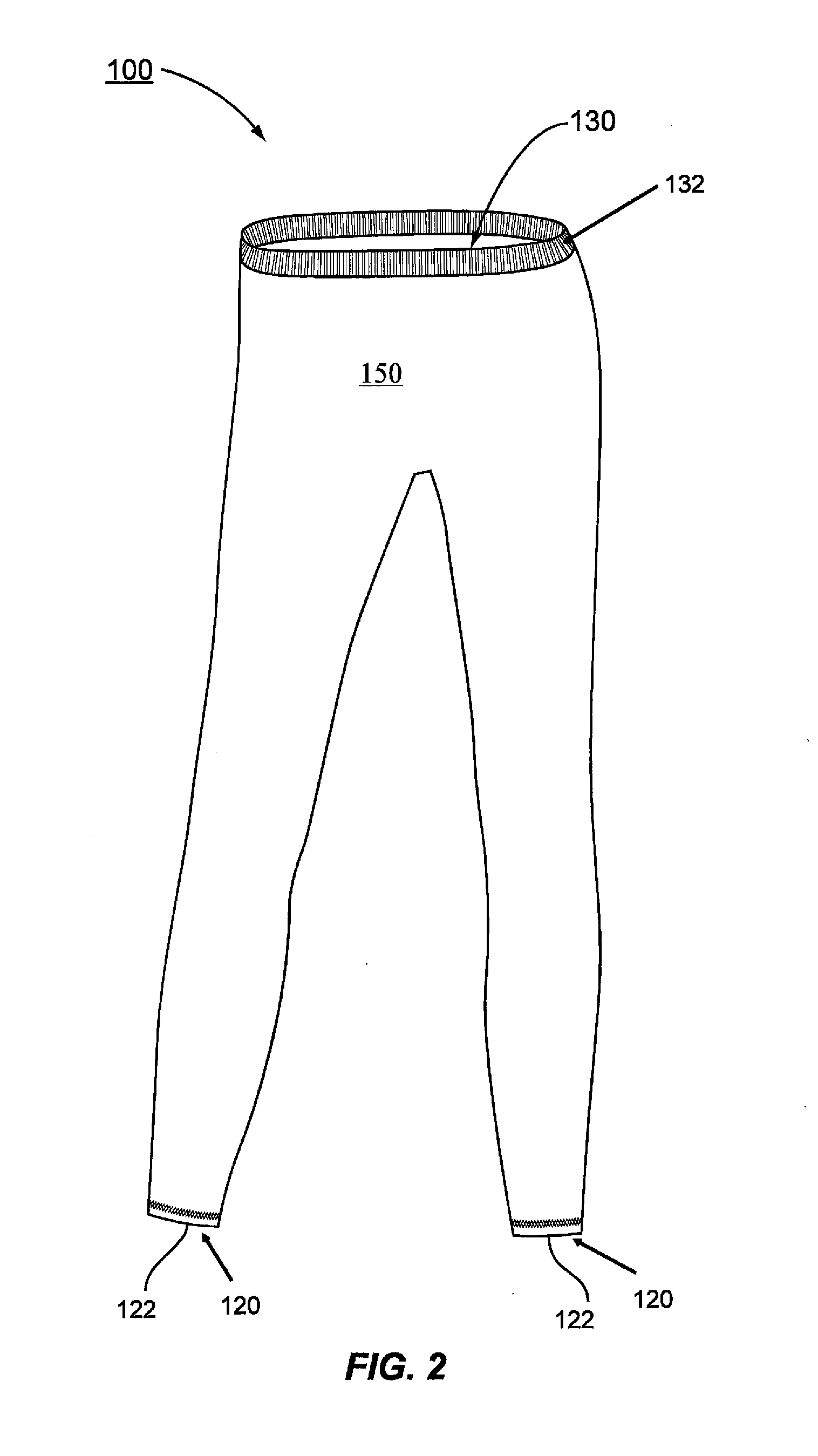Flame resistant undergarments
a technology of undergarments and flame-resistant fabrics, which is applied in the field of flame-resistant undergarments, can solve the problems of poor flame-resistant performance, insufficient flame-resistant flame-resistant base layer garments formed of conventional yarns and fabrics, and deformation of chemical treatments over the life of the garment through physical wear and laundering, so as to facilitate the movement of moisture and inhibit or prevent the growth of microorganisms
- Summary
- Abstract
- Description
- Claims
- Application Information
AI Technical Summary
Benefits of technology
Problems solved by technology
Method used
Image
Examples
Embodiment Construction
[0012]Certain exemplary embodiments of the present invention are described below and illustrated in the accompanying figures. The embodiments described are only for purposes of illustrating the present invention and should not be interpreted as limiting the scope of the invention, which, of course, is limited only by the claims below. Other embodiments of the invention, and certain modifications and improvements of the described embodiments, will occur to those skilled in the art and all such alternate embodiments, modifications, and improvements are within the scope of the present invention.
[0013]The flame resistant undergarments of this invention are worn as base-layer apparel, or next-to-skin apparel. The undergarments include, but are not necessarily limited to, long or short-sleeve undershirt, and long or short underwear, tank tops, full body undergarments, and other similar next-to-skin undergarments. These undergarments surprisingly have improved visual aesthetics, and a soft...
PUM
| Property | Measurement | Unit |
|---|---|---|
| length | aaaaa | aaaaa |
| length | aaaaa | aaaaa |
| colorfastness | aaaaa | aaaaa |
Abstract
Description
Claims
Application Information
 Login to View More
Login to View More - R&D
- Intellectual Property
- Life Sciences
- Materials
- Tech Scout
- Unparalleled Data Quality
- Higher Quality Content
- 60% Fewer Hallucinations
Browse by: Latest US Patents, China's latest patents, Technical Efficacy Thesaurus, Application Domain, Technology Topic, Popular Technical Reports.
© 2025 PatSnap. All rights reserved.Legal|Privacy policy|Modern Slavery Act Transparency Statement|Sitemap|About US| Contact US: help@patsnap.com



